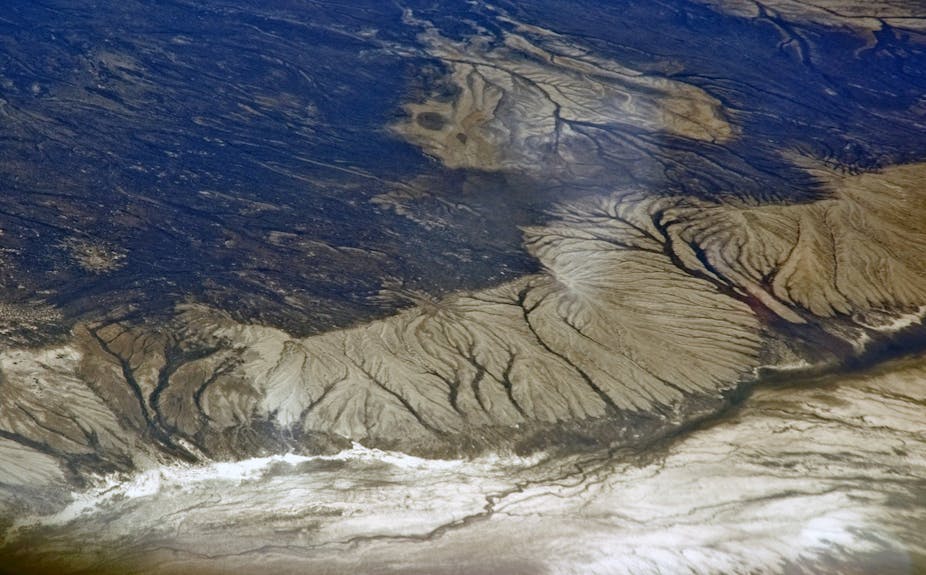We know quite a lot about which species around the world are most endangered. The Red List of threatened species, developed by the International Union for the Conservation of Nature (IUCN), identifies species that are most at risk of extinction.
But scientists have become increasingly concerned that the habitats of species and the ecological processes that influence the relationships between species are not adequately considered. Now IUCN has developed a similar risk assessment framework for ecosystems, such as Florida’s Everglades, Australia’s Great Barrier Reef and Scandinavia’s Boreal Forests. It lets the IUCN rank them as endangered, vulnerable or not threatened according to the risks that they face.
For the first time, we have a scientifically robust risk assessment framework, which works across the full range of terrestrial, freshwater, marine and subterranean ecosystems.
This new framework for a Red List of Ecosystems is now published in a scientific study in the Public Library of Science journal, PLoS ONE which illustrates how it would work around the world in a trial on 20 case studies.
Together, the Red Lists for species and ecosystems will provide a more comprehensive view of the status of the environment and its biodiversity than either can on its own.
The ecosystem Red List focuses on biodiversity, habitats for species, as well as their interactions and dependencies, including food webs. The species Red List focuses on individual species, some of which may go extinct even though the ecosystems in which they live continue to remain functional.
Assessing an ecosystem
This new Red List assesses each ecosystem against five criteria.
Two of the criteria relate to an ecosystem’s distribution - how rapidly it is declining and its current extent.
Another two of the criteria relate to functional characteristics of ecosystems. They measure how rapidly and how extensively the physical and biological components of an ecosystem are degrading, particularly the processes that sustain the ecosystem and its species.
The fifth criterion allows multiple threats to an ecosystem to be assessed, as well as potential synergies between them.
Among the 20 ecosystems assessed in the study, the remote mountain ecosystems of the Venezuelan Tepui are among those at least risk of collapse. These are showing little evidence of decline in distribution or function in the past or near future. At the other extreme is the Aral Sea of central Asia, which collapsed during the 1980s and 1990s.
Eight of the case studies come from Australia, and these exhibit varying levels of threat related to land clearing and its legacies, overexploitation of water resources, pollution and climate change.
The lessons from the Aral Sea assessment are sobering. Not only were a host of species lost forever as the sea became hypersaline and dried over much of its former extent, but the ecosystem collapse led to socio-economic disaster, including the closure of regional fisheries and shipping industries. Dust storms were generated from the dry sea bed and they continue to have major impacts on infant mortality and other indicators of human health.
How will this Red List help?
The Red List risk assessment methods are a vital part of the scientific infrastructure needed to support evidence-based environmental management. Other components of the infrastructure that need further development include a base of expertise for carrying out the risk assessments.
Most importantly, we need the essential long-term data needed to underpin reliable and scientifically credible assessments. Initiatives such as the Australian Government’s Long Term Ecological Research Network, which monitors changes in ecosystems and identifies the underlying causes of change, are a vital part of this infrastructure.
Within Australia, this new international standard for risk assessment also presents an opportunity to improve alignment among the various national and state processes currently in place for managing threatened ecosystems. It could strengthen the science and promote better co-ordination of conservation efforts across jurisdictions.
Over the coming decade, IUCN will carry out a global assessment of ecosystems, largely in collaboration with local experts and authorities.
As an early warning system, the Red List of Ecosystems will help governments, industries and communities avoid ecosystem collapse and the associated socio-economic impacts by informing better environmental decisions.
Red List assessments will better target the ecosystems most vulnerable to degradation and help determine which options for investment in environmental management will work best. Ultimately, better planning and management is needed to conserve our rich biodiversity and sustain ecosystem services that support our current standards of living.

